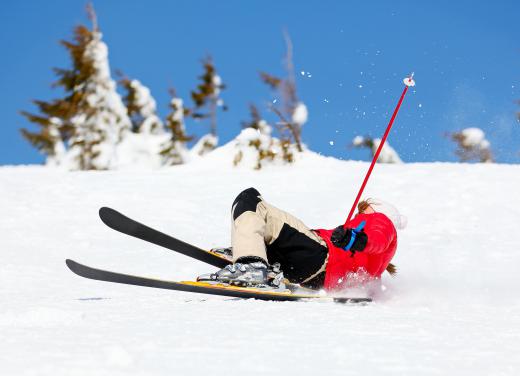For years, extreme sports have necessitated the use of protective equipment, and most vital among the various safety pieces is the helmet. Curiously, the ski helmet has been slow to arrive on the scene, and in the past, a ski helmet was typically worn only by racers. However, in recent years the ski helmet has become a necessity for any skiers or snowboarders hitting the slopes, and though most ski areas do not require helmets, many skiers are picking up on the trend. A ski helmet can prevent head injury while providing warmth on the slopes.
Because skiers can reach high speeds while descending a slope, it is not uncommon for head injuries to occur when a skier falls. Though snow may seem soft and forgiving, it can cause severe damage to the head -- most common among such injuries are concussions and fractures. In addition, hard objects may be hidden beneath the snow, and when a skier falls, he may come in contact with rocks or branches. Collisions with other skiers is also quite common. Therefore, a ski helmet has become instrumental in preventing severe head injuries. The design of the ski helmet is similar to that of a bicycle helmet: a polycarbonate shell wraps around a hard, pressed styrene foam. These materials make the ski helmet light and strong.

The ski helmet is often lined with a soft, warm liner to keep warmth from escaping through the vents. However, many ski helmets also come with the option of opening up those liners to allow heat to escape on warmer skiing days. The helmet should fit snug to the head, but not too tight as to become uncomfortable, and many helmets come with ear coverings for warmth and a tab on the back of the helmet to hold ski goggles.

A ski helmet may come as a full face helmet or an open faced helmet. Full face helmets feature a protective band that crosses in front of the face to protect the nose and mouth in the event of a fall or collision. Full face helmets are popular among ski racers, but most recreational skiers opt for the open face helmet, which allows for better ventilation, better vision, and less weight. A full face ski helmet may be a better choice for younger skiers who have not yet learned to control themselves on the slopes.
